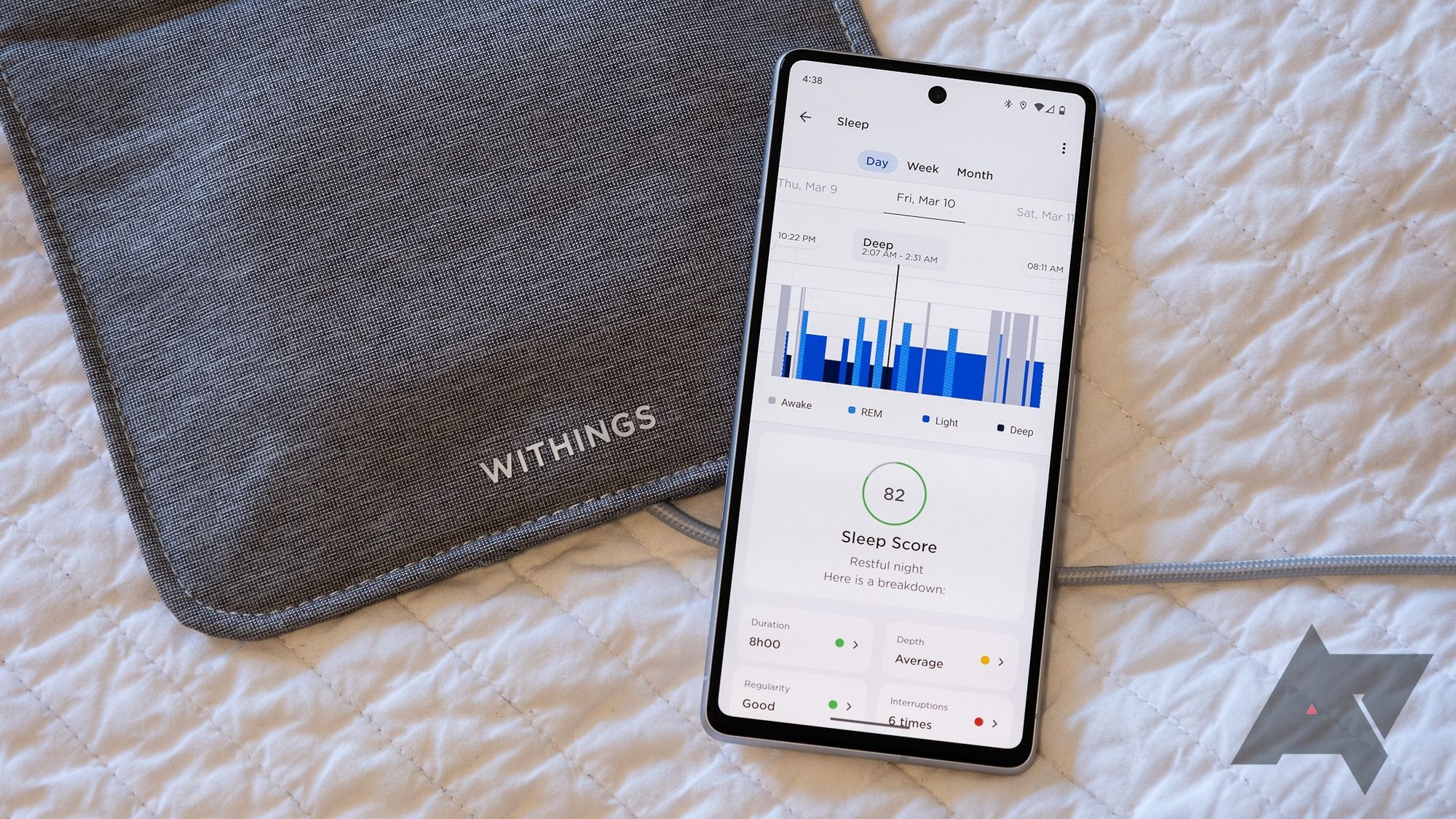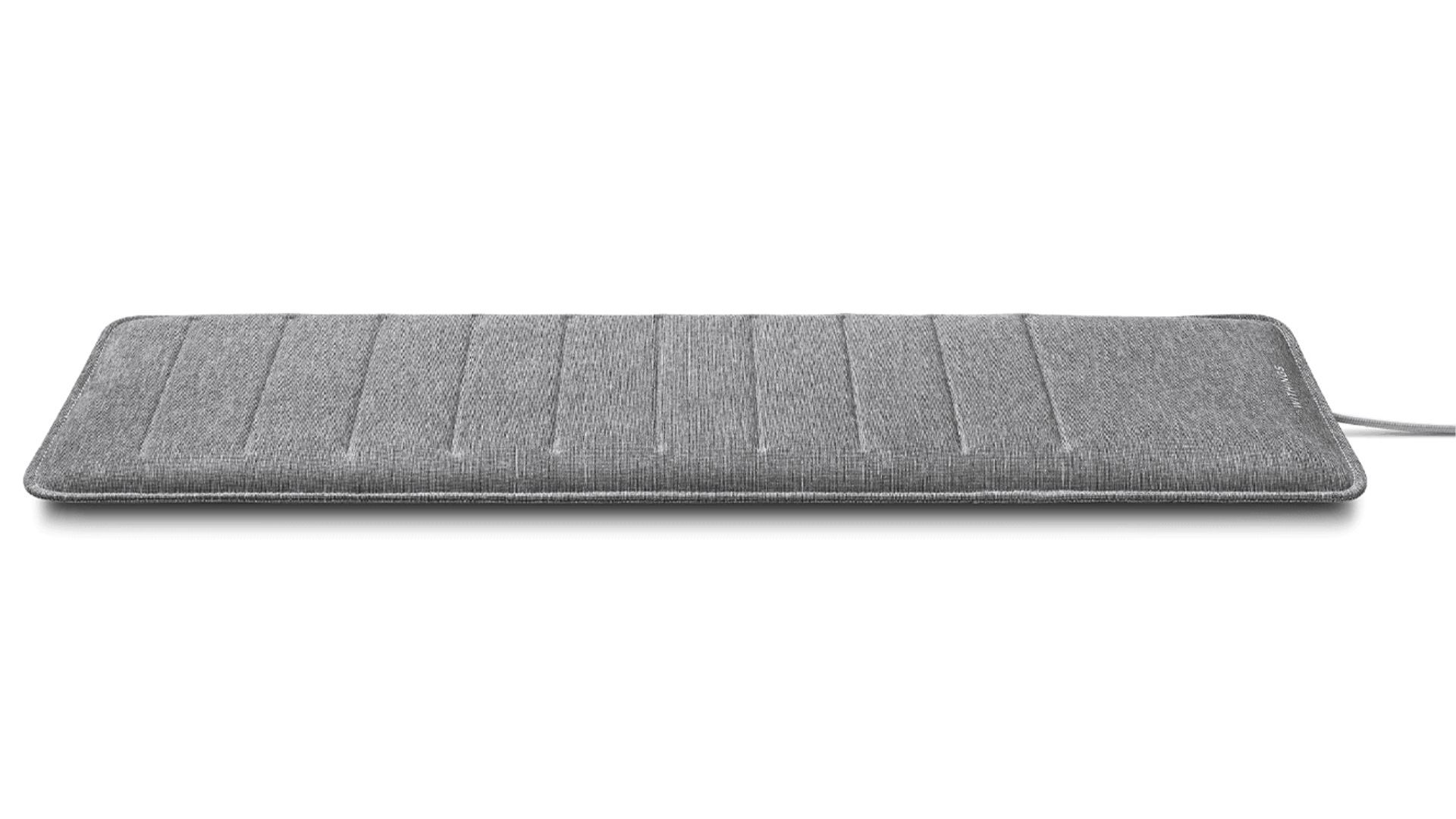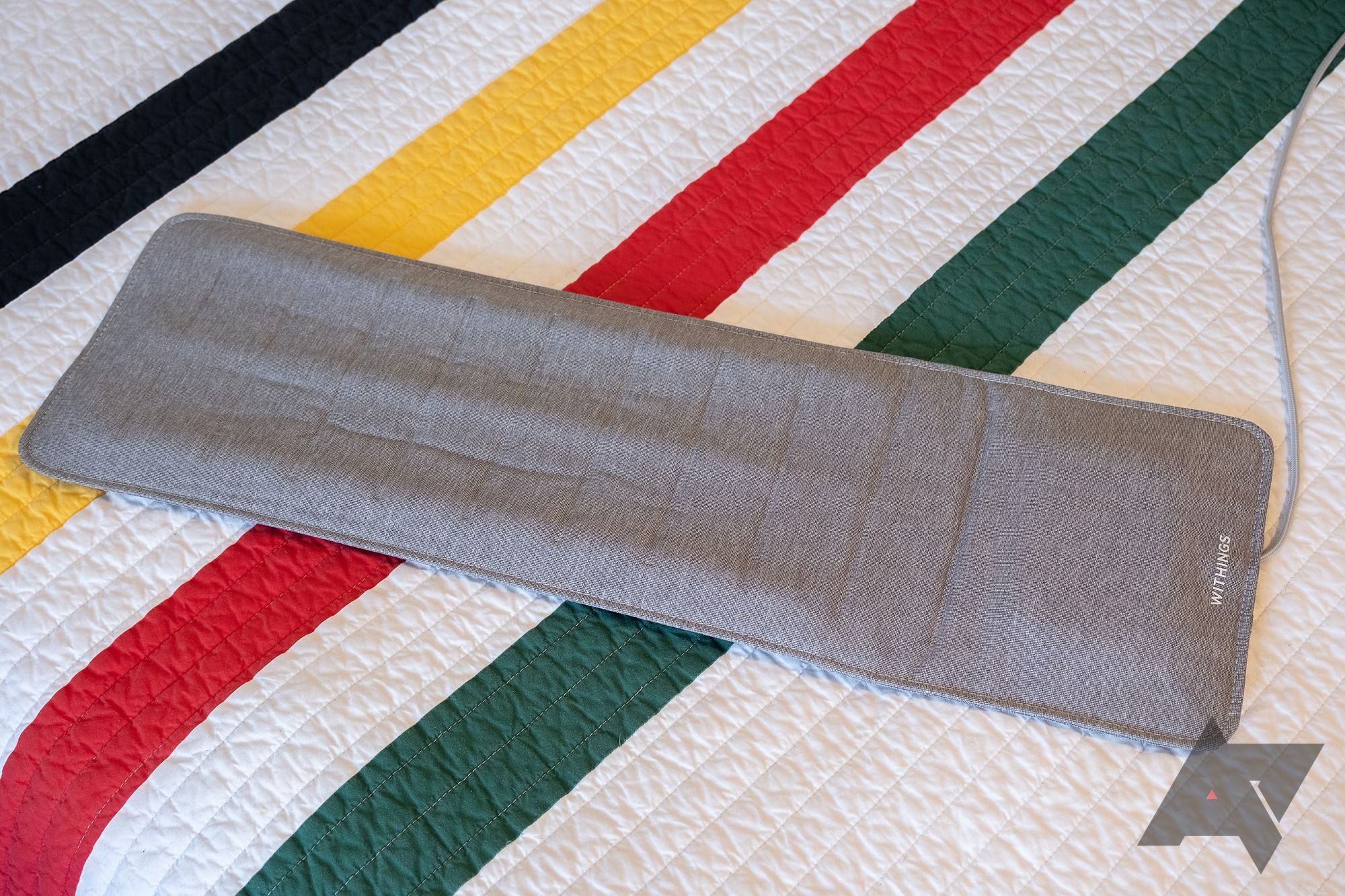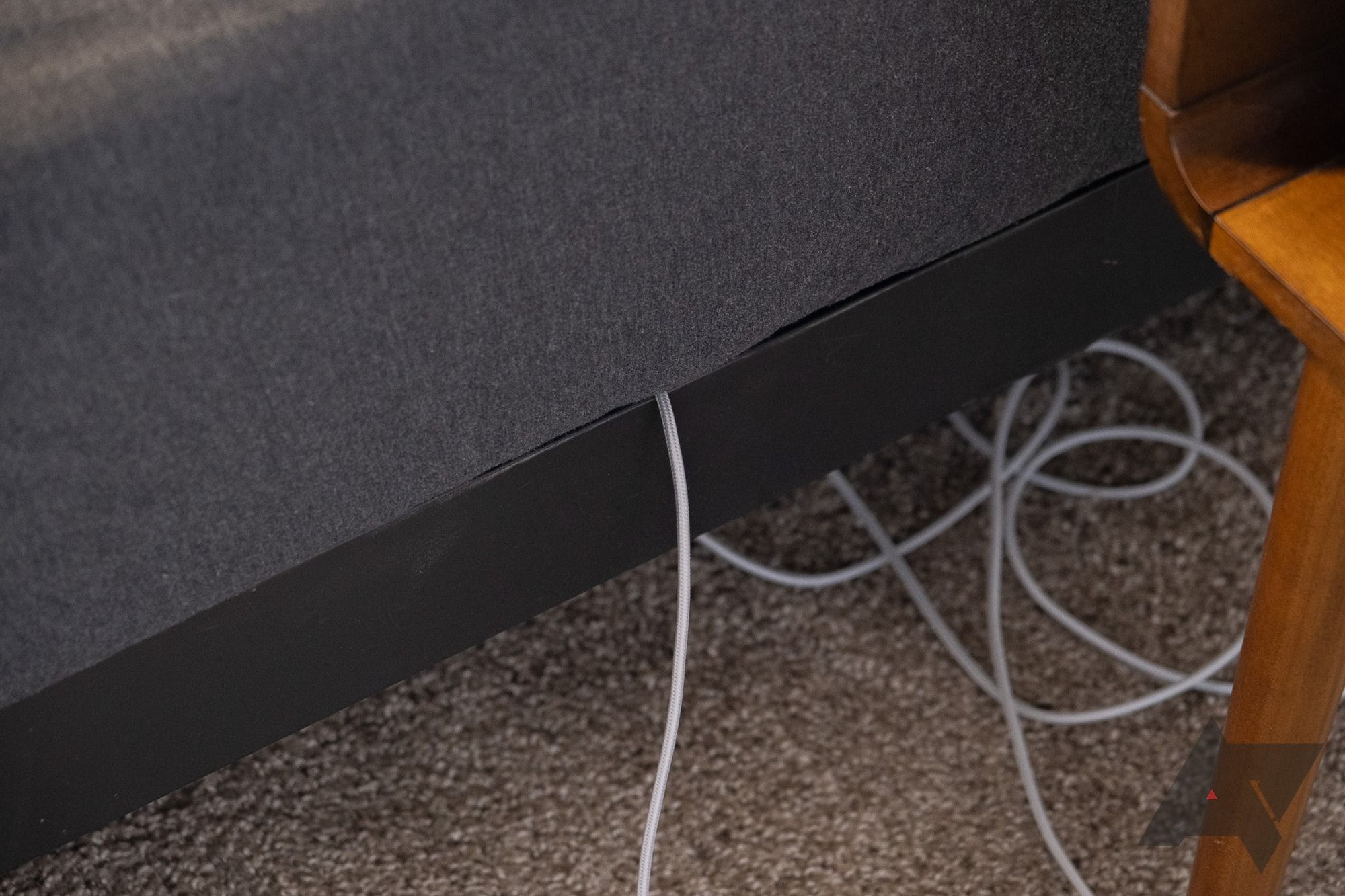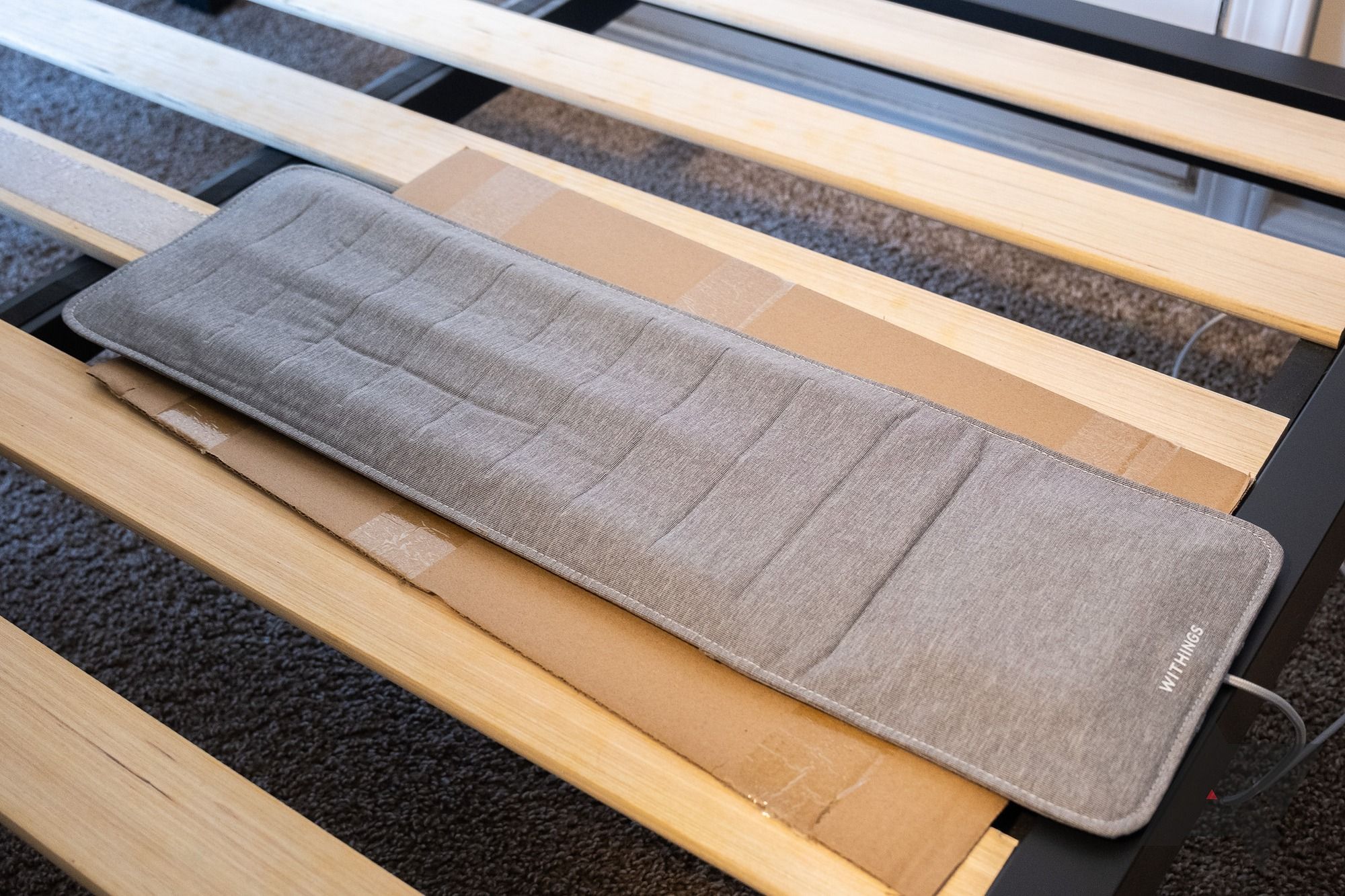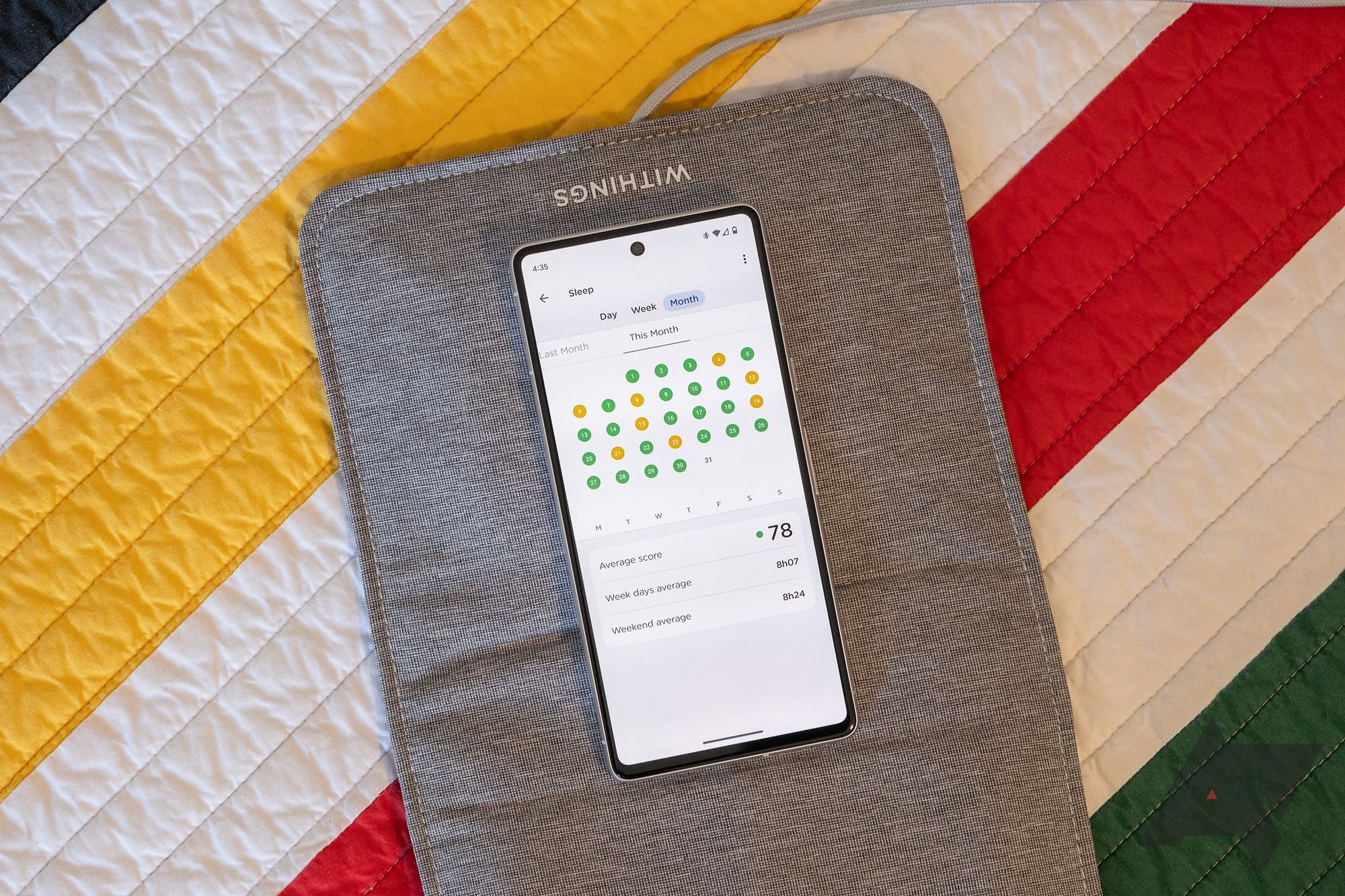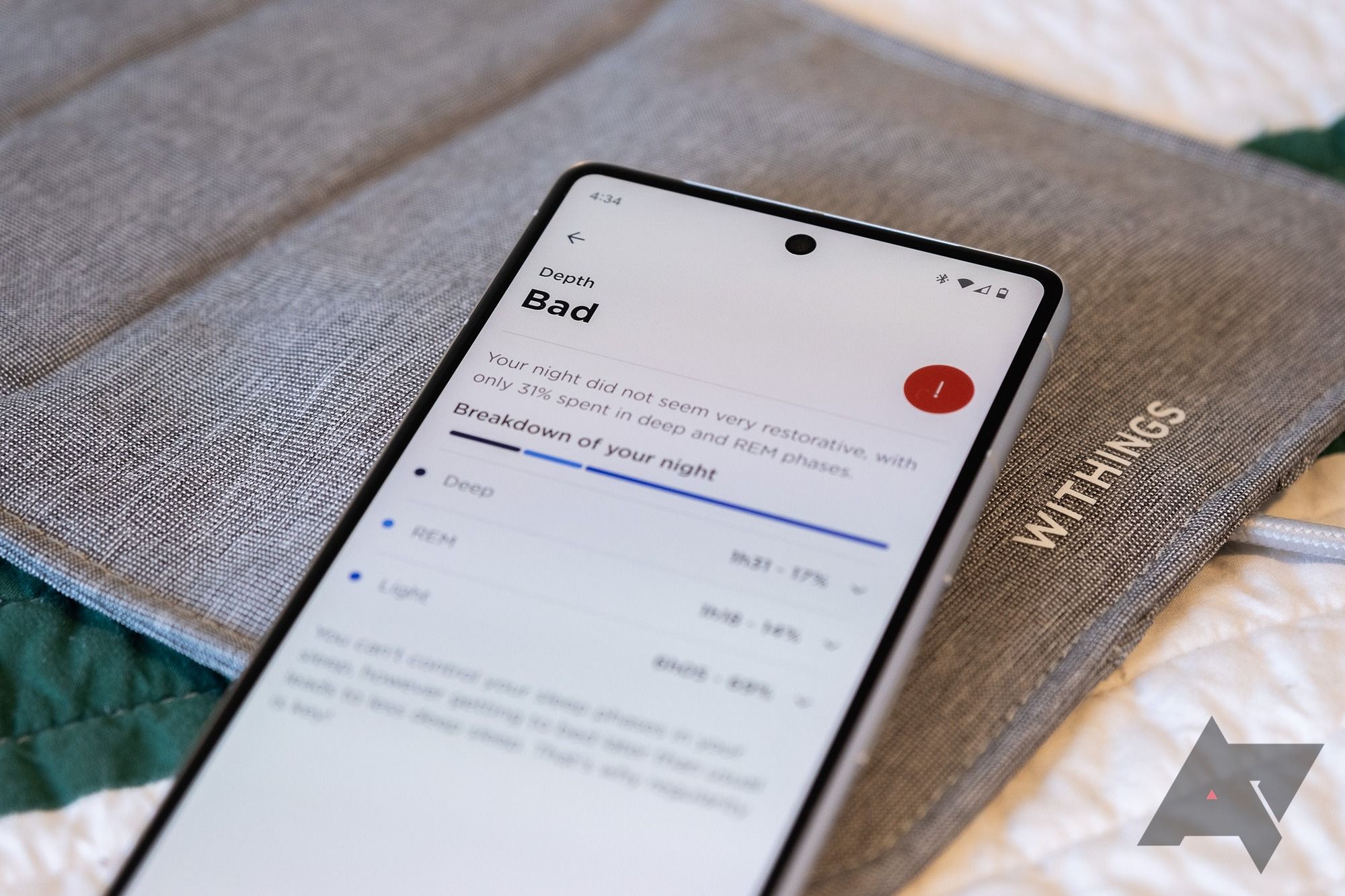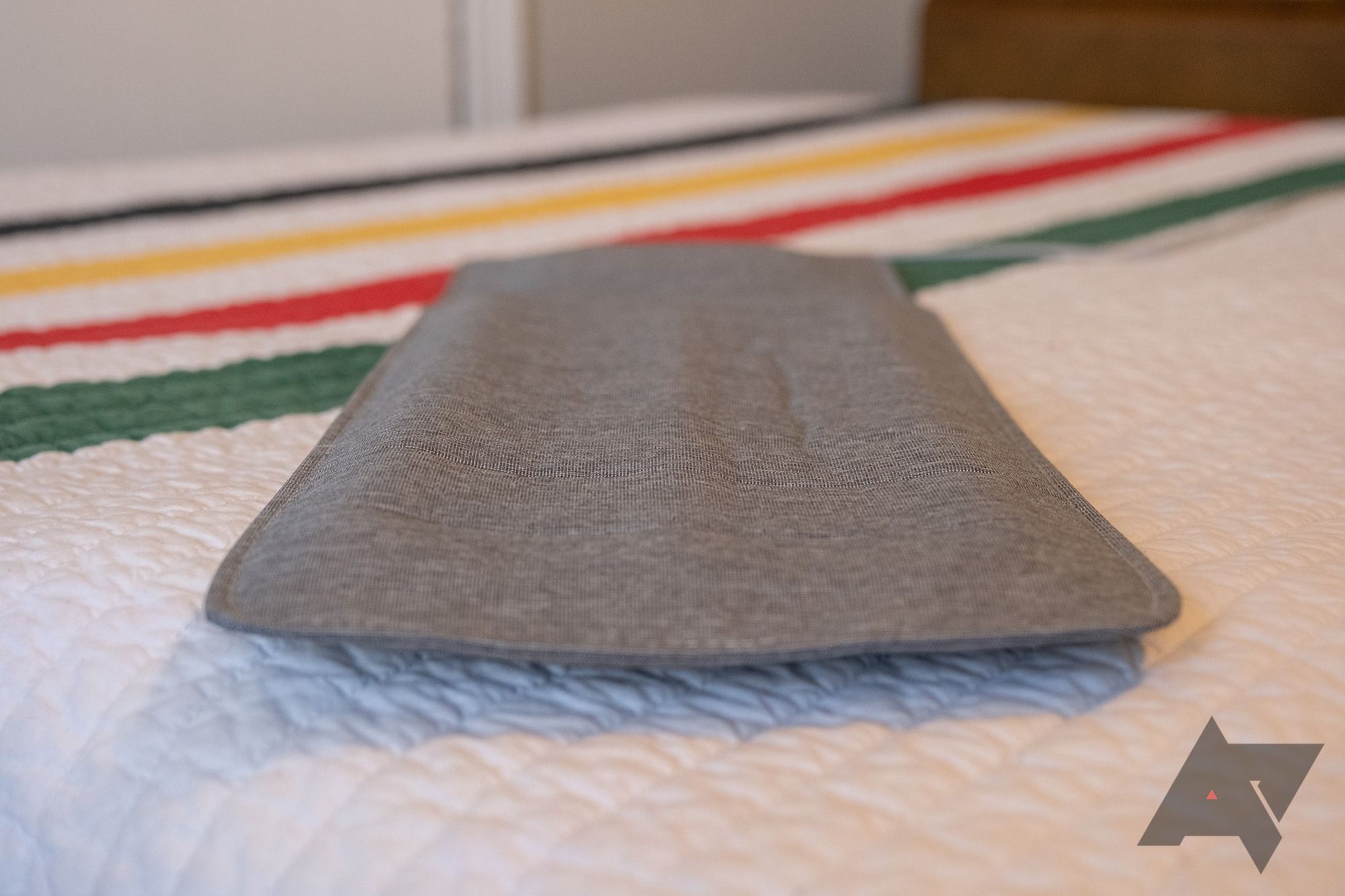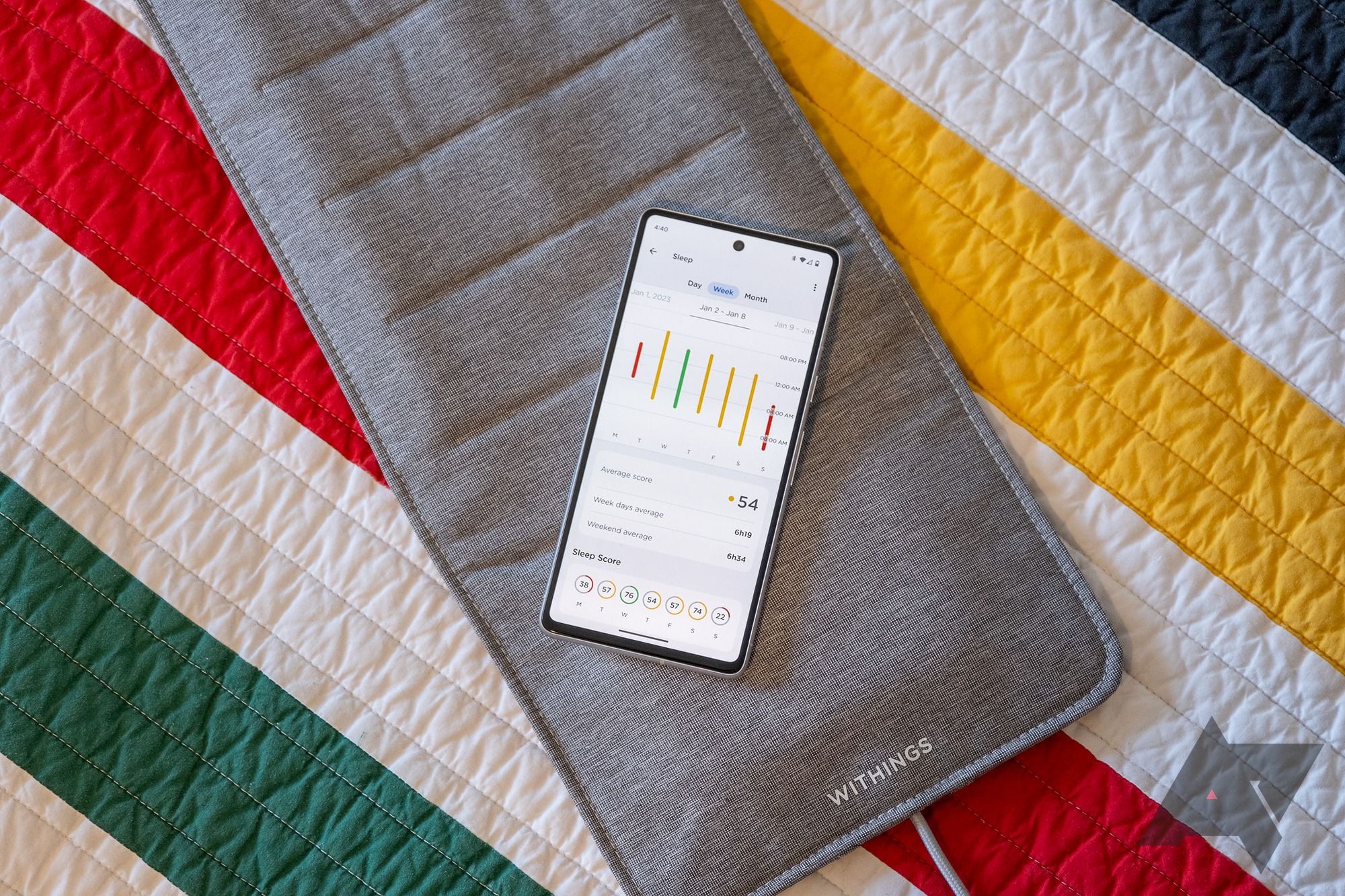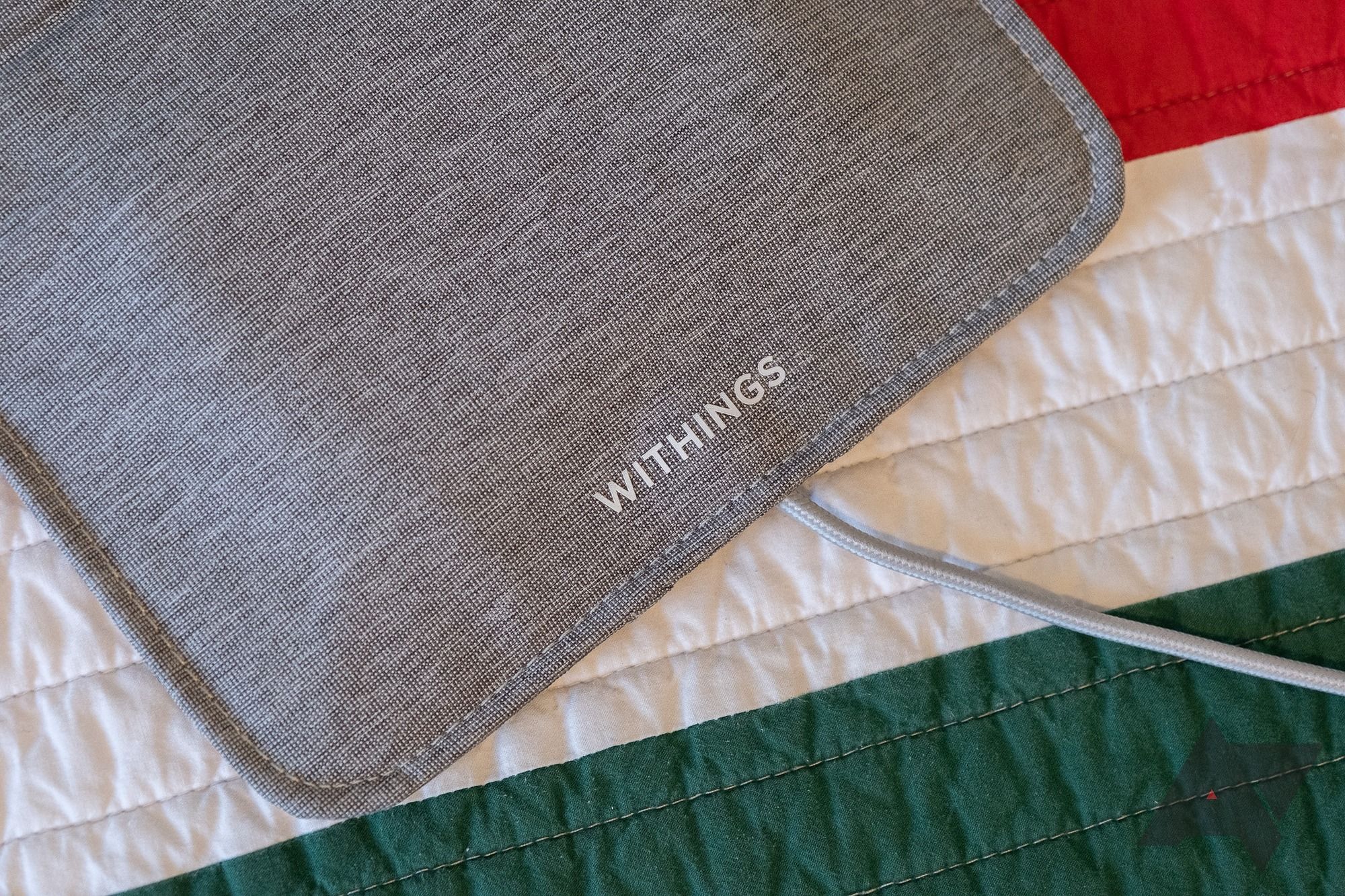Practically every piece of tech that goes on your wrist can, in some way, track your sleep: smartwatches and fitness trackers from Garmin, Samsung, Fossil, Google (including Fitbit), and others can all keep tabs on your nightly rest. But solutions like these require charging and wearing a watch to bed can be uncomfortable.
The Withings Sleep, on the other hand, is purpose-built to be a sleep tracker — and that's it. It's not a wearable at all, but rather a pad that lives under your mattress. It's extremely easy to use, and perhaps the least intrusive sleep-tracking device you can buy. If you want to get a better grasp of the quality and quantity of your rest without much fuss, the Withings Sleep is a great way to do it.
Withings Sleep Tracking Mat
The Withings Sleep is an unobtrusive and dead-simple way to track your sleep. It's a bit pricey at $130, and if you travel a lot, it might not be for you — but assuming you spend most nights in one bed, it's a great option.
- Heart Rate Monitor: Yes
- Integrations: IFTTT
- Health sensors: Pneumatic sensor, sound sensor
- Dimensions: 25 x 7.5 x 0.2"
- Colors: Gray
- Price: $129.95
- Fully automatic, detailed sleep tracking
- No device to wear and no battery to charge
- No subscription to pay for
- Not ideal for travel
- Requires a power cable poking out from under your mattress
- A little pricey at retail
Price and availability
The Withings Sleep costs $130 at retail. Up until October 2022, you could get it for $100 — but due to "unprecedented global context," Withings jacked the prices of many of its products up late last year. Since then, the Sleep has dropped as low as $90 on sale, but that was a Black Friday deal. Discounts are generally uncommon. You can pick one up from Amazon or Best Buy, or directly from Withings.
Design and hardware
The Withings Sleep looks like a gray, fabric rectangle with a power cable sticking out the side. It's about two feet by eight inches across. It's meant to sit between your mattress and your box spring (or your mattress and a piece of cardboard, if you don't have a box spring), and it's thin enough that you can't feel it's there at all when you're lying down.
Sandwiched inside the Withings Sleep's fabric outer shell are tubes that a small pump inflates with air; a pneumatic sensor measures pressure across the mat to determine when and how you're moving. Withings can interpret this data to know whether you were sleeping, and which stage of sleep you were in at any given time throughout the night.
The mat also measures your heart rate (through ballistocardiography, a five-dollar word that means it can feel the movement of your heartbeat), and it's got a sound sensor to keep tabs on your breath.
The power cable hangs off the side of your bed.
The Withings Sleep syncs your sleep data over 2.4Ghz Wi-Fi, which is handy. Because data goes directly from the pad to Withings' servers over the internet, you don't need to have your phone near the mat while you're sleeping — or really ever, after you've set the device up.
Setup, sleep tracking, and app
Setting up the Withings Sleep is simple. Once you've positioned the mat under your mattress at chest height, you plug it in with the bundled 5W adapter, then follow the brief instructions in the Withings Health Mate app (which includes creating a Withings account, if you don't already have one). You'll hear the pad's air pump quietly doing its thing during this setup process, but after it's complete, the Sleep doesn't make any sound to speak of.
The official way to set up the Withings Sleep on a slatted frame: on any old hunk of cardboard.
After everything's set up, actually using the Withings Sleep is a passive process; it'll automatically track your sleep when you're lying on it, stopping when you get up in the morning. Each day, the Health Mate app generates a numeric Sleep Score between zero and 100 based on several different parameters it tracks: duration, depth, regularity, interruptions, how long it took you to fall asleep after you laid down, and how long it took you to get out of bed after waking in the morning.
The data the Withings Sleep captured in my time with it is broadly in line with the numbers I got from my Oura ring on the same nights, though the two often disagreed on how long I'd spent in deep and REM sleep stages. It's hard to say which of the two was more accurate — some nights, Oura said I got more REM sleep than Withings, and others were the opposite. I have to assume the Oura ring was generally closer to the mark, as it tended to register more brief changes than the Withings Sleep did.
I'm not sure the Sleep accurately measured my time to get up stat a lot of the time. On many days, the Health Mate app reported that I immediately got out of bed upon waking, which is not typically the case for me. My wife gets up earlier than I do most days, and I think the Sleep sometimes interprets my spreading out or rolling onto her empty side of the bed in the early morning as getting up. If you don't always sleep on the same side of the bed, you might run into similar accuracy issues.
Heart rate data doesn't directly figure into your sleep score, but considering the Withings Sleep tracks your pulse by feeling your heartbeat through your mattress, data from the Sleep was impressively close to what the Oura ring measured. The two typically came up with averages that only differed by a few beats per minute.
Breathing disturbances and snoring also aren't part of your sleep score, but the Withings Sleep monitors both with a built-in microphone. Withings defines breathing disturbances as "reduced breathing or breathing pauses when sleeping," and gives you a rating of low, moderate, or high for each night. This data doesn't necessarily tell you anything outright, but lots of moderate and high scores could mean you've got a medical issue like sleep apnea. You shouldn't take Withings' analysis as medical advice, but it might be a good indicator that you should schedule an appointment to talk to a doctor.
To that end, the Health Mate app lets you export a PDF of your sleep data that you can share with your doctor. These reports can span the past month, the past quarter, or a custom date range of your choosing, and include a birdseye view of your sleep stats for the date range selected plus a detailed sleep diary that covers the past 30 days. Generating a report can take a few minutes, and I ran into more than a few network errors in the process. But the reports are comprehensive, covering timing, duration, breathing disturbances, and more. If you've got sleep-related concerns to share with your doctor, these reports should be a useful tool.
You can also look back at historical data for everything the Withings Sleep tracks in the Health Mate app. There are daily, weekly, and monthly overviews of your general sleep quality, and quarterly and even yearly trend views for both heart rate and breathing disturbances. Withings gives you access to tons of data about your own sleep, and these longer-term views can help you make sense of it over time.
Competition
The Withings Sleep is a unique device. While pretty much every fitness tracker and smartwatch out there can monitor many of the same sleep data points as the Sleep, none of those devices are purpose-built to do that. At an MSRP of $130, though, the Sleep is similarly priced to many traditional fitness trackers, like the $100 Fitbit Inspire 3.
It's hard to say which will be the better buy for you, considering the vastly different use cases. If you don't mind the idea of keeping a fitness tracker charged and wearing it to bed each night, the added benefits of waking activity tracking and notification delivery might be worth the additional effort.
But the Sleep doesn't require charging or any other maintenance, and you can't feel it while you're lying on it. If all you care about is sleep tracking and you typically sleep in one place, the Withings Sleep is probably the move for you.
Should you buy it?
The Withings Sleep was a better deal before the company's 2022 price hikes. Today, as a $130 device that only monitors your sleep, it's a fairly niche offering. But it's easy to set up and exceedingly simple to use: all you have to do is sleep on it. There are no buttons to press, no batteries to charge, and, refreshingly, no recurring fee to pay to get all the features — Withings doesn't offer a paid subscription at all.
If you travel a lot, enough that sleep data from your home bed isn't enough to get the full picture, you'll probably want to look into fitness trackers or smartwatches for your sleep-tracking needs — the Withings Sleep isn't really made to move between different beds. For anyone else looking to get a better handle on their sleep, though, the Withings Sleep is a no-fuss way to do just that.

